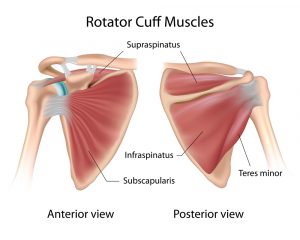[fusion_builder_container hundred_percent=”no” equal_height_columns=”no” menu_anchor=”” hide_on_mobile=”small-visibility,medium-visibility,large-visibility” class=”” id=”” background_color=”” background_image=”” background_position=”center center” background_repeat=”no-repeat” fade=”no” background_parallax=”none” parallax_speed=”0.3″ video_mp4=”” video_webm=”” video_ogv=”” video_url=”” video_aspect_ratio=”16:9″ video_loop=”yes” video_mute=”yes” overlay_color=”” video_preview_image=”” border_size=”” border_color=”” border_style=”solid” padding_top=”” padding_bottom=”” padding_left=”” padding_right=””][fusion_builder_row][fusion_builder_column type=”2_3″ layout=”1_1″ background_position=”left top” background_color=”” border_size=”” border_color=”” border_style=”solid” border_position=”all” spacing=”yes” background_image=”” background_repeat=”no-repeat” padding_top=”” padding_right=”” padding_bottom=”” padding_left=”” margin_top=”0px” margin_bottom=”0px” class=”” id=”” animation_type=”” animation_speed=”0.3″ animation_direction=”left” hide_on_mobile=”small-visibility,medium-visibility,large-visibility” center_content=”no” last=”no” min_height=”” hover_type=”none” link=””][fusion_title hide_on_mobile=”small-visibility,medium-visibility,large-visibility” class=”” id=”” content_align=”left” size=”1″ font_size=”” line_height=”” letter_spacing=”” margin_top=”” margin_bottom=”” margin_top_mobile=”” margin_bottom_mobile=”” text_color=”” style_type=”default” sep_color=””]
April 2019 Newsletter
[/fusion_title][fusion_separator style_type=”default” hide_on_mobile=”small-visibility,medium-visibility,large-visibility” class=”” id=”” sep_color=”” top_margin=”” bottom_margin=”” border_size=”” icon=”” icon_circle=”” icon_circle_color=”” width=”” alignment=”center” /][fusion_text columns=”” column_min_width=”” column_spacing=”” rule_style=”default” rule_size=”” rule_color=”” hide_on_mobile=”small-visibility,medium-visibility,large-visibility” class=”” id=””]
Top Stories In This Newsletter
The hidden perils of high heels for adolescent girls
Meet our August Client of the Month, Jose
[/fusion_text][fusion_text columns=”” column_min_width=”” column_spacing=”” rule_style=”default” rule_size=”” rule_color=”” hide_on_mobile=”small-visibility,medium-visibility,large-visibility” class=”” id=””]Please click here to find a PDF version of our April Newsletter[/fusion_text][fusion_text columns=”” column_min_width=”” column_spacing=”” rule_style=”default” rule_size=”” rule_color=”” hide_on_mobile=”small-visibility,medium-visibility,large-visibility” class=”” id=””]
The Hidden Perils of High Heels for Adolescent Girls
Does your teenage daughter like to dress up in high heels? Maybe she’s just discovered the school party scene and is looking to impress her friends…or the boys?
But this innocent-seeming part of growing up could have an uncomfortable end, if a study from a few years back is anything to go by.
High heels and posture
The 2011 Brazilian study aimed to analyse the influence of wearing highheeled shoes on postural patterns: in particular, the effect on lumbar lordosis and pelvic inclinations among adolescents aged between 13 and 20 years.
Most previous studies had focused on adult women; but the study authors were particularly interested in adolescents as the body undergoes significant changes that affect posture during this stage of growth.
One hundred adolescents took part in the study (50 users of high-heeled shoes and 50 non-users).
Postural assessments were obtained by photogrammetry when barefoot and when wearing wedged high-heeled shoes.
Evaluation postural software was then used to analyse posture, measuring the lumbar lordosis and the horizontal alignment of the pelvis.
The results?
“With high-heeled use, the NUG demonstrated rectification of the lumbar spine and pelvic retroversion, whereas the UG demonstrated hyperlordosis and pelvic anteversion. When barefoot, smaller lumbar lordosis angles for both groups were observed. However, the pelvic angles were lower for the UG group and higher for the NUG. The studied angles showed high reliabilities. Age was correlated with lumbar lordosis angles for the NUG in the barefoot condition and with pelvic alignments in both conditions for the UG.”
(Note NUG: non-wearers of high heels; UG – wearers of high heels)
And the conclusion?
“For the subjects in this study, the use of high-heeled shoes is correlated with increased lumbar lordosis and pelvic anteversions. Lumbar lordosis angles are correlated with age for the NUG when barefoot.”
Final Thoughts
Poor posture can create unnecessary strain on muscles and lead to all types of aches, pains, and other problems.
Modern lifestyles are tough on postures as it is. With the predominance of office jobs, excessive sitting time, increased screen time, and lack of daily physical activity, postural problems are common enough.
The simple act of growing during adolescence even creates unique strains on the posture as the body undergoes major physical and psychological change.
When we add in the potential for problems from footwear, it’s clear that we need to be more careful about the choices we make when we’re young. They can affect our health later in life.
Next time your teenage daughter reaches for the high heels, you may have a battle on your hands to convince her that flatter shoes might be better for her posture!
References:
de Oliveira Pezzan et al. Postural assessment of lumbar lordosis and pelvic alignment angles in adolescent users and nonusers of high-heeled shoes. J Manipulative Physiol Ther 2011;34:614-621
[/fusion_text][/fusion_builder_column][fusion_builder_column type=”1_3″ layout=”1_3″ spacing=”” center_content=”no” link=”” target=”_self” min_height=”” hide_on_mobile=”small-visibility,medium-visibility,large-visibility” class=”” id=”” background_color=”” background_image=”” background_image_id=”” background_position=”left top” background_repeat=”no-repeat” hover_type=”none” border_size=”0″ border_color=”” border_style=”solid” border_position=”all” border_radius=”” box_shadow=”no” dimension_box_shadow=”” box_shadow_blur=”0″ box_shadow_spread=”0″ box_shadow_color=”” box_shadow_style=”” padding_top=”” padding_right=”” padding_bottom=”” padding_left=”” margin_top=”” margin_bottom=”” animation_type=”” animation_direction=”left” animation_speed=”0.3″ animation_offset=”” last=”no”][fusion_blog layout=”large” blog_grid_columns=”” blog_grid_column_spacing=”” blog_masonry_grid_ratio=”” blog_masonry_width_double=”” equal_heights=”no” number_posts=”6″ offset=”0″ pull_by=”category” cat_slug=”” exclude_cats=”” tag_slug=”” exclude_tags=”” orderby=”date” order=”DESC” thumbnail=”yes” title=”yes” title_link=”yes” content_alignment=”” excerpt=”” excerpt_length=”10″ strip_html=”yes” meta_all=”yes” meta_author=”yes” meta_categories=”yes” meta_comments=”yes” meta_date=”yes” meta_link=”yes” meta_tags=”yes” scrolling=”pagination” grid_box_color=”” grid_element_color=”” grid_separator_style_type=”” grid_separator_color=”” padding_top=”” padding_right=”” padding_bottom=”” padding_left=”” hide_on_mobile=”small-visibility,medium-visibility,large-visibility” class=”” id=”” /][/fusion_builder_column][/fusion_builder_row][/fusion_builder_container]

